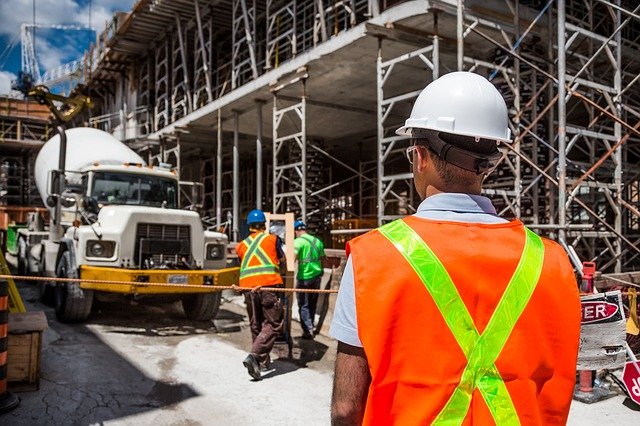Collaborative Reporting for Safer Structures UK
Contents |
[edit] Introduction
Collaborative Reporting for Safer Structures UK (CROSS-UK) is a collaborative body that compiles and publishes free safety information for built environment professionals. Formerly known as the Confidential Reporting on Structural Safety, CROSS was founded in 2005 as a system for the collation of data on matters of concern relating to structural safety.
CROSS operates internationally; following in the footsteps of CROSS-UK, the IStructE launched in Australia with CROSS-AUS in 2018 and then in 2019 the network grew to the US with CROSS-US formed by the Structural Engineering Institute (SEI) of the American Society of Civil Engineers (ASCE).
The UK government 'Construction Products Reform Green Paper 2025' published 26 February 2025, defines Collaborative Reporting for Safer Structures UK (CROSS-UK) as 'A confidential reporting system which allows professionals working in the built environment to report on fire and structural safety issues. These are then published anonymously to share lessons learned, create positive change, and improve safety.'
[edit] Background
The establishment of the CROSS safety reporting system was based on work by the Standing Committee on Structural Safety (SCOSS). In 2012, SCOSS and CROSS were officially aligned under the name Structural-Safety.
In 2018, CROSS was incorporated into the recommendations of the Hackitt report. The system was specifically mentioned under recommendation 1.4c, which states, ‘For all other buildings, the current CROSS scheme should be extended and strengthened to cover all engineering safety concerns and should be subject to formal review and reporting at least annually.’
After discussions between Structural-Safety and the Ministry of Housing, Communities & Local Government (MHCLG), funding for CROSS-UK was increased in 2020 to include fire safety in compliance with the aforementioned recommendations in the report. The CROSS system expanded in 2021 to include structural safety as well as fire safety and all three entities - Structural-Safety, SCOSS and CROSS - are united to operate under a new name, Collaborative Reporting for Safer Structures (CROSS).
[edit] Importance of safety reporting
The new name for the organisation is meant to illustrate the connection and to respond to the overlap - both professional and physical - between structural safety and fire safety. CROSS will continue to provide built environment professionals the opportunity to make confidential reports when they witness either type of safety issue.
The information collected in the reports is confidential, but it is shared with a panel of expert volunteers who review and comment on findings to provide additional insight into incidents. In addition to educating others about the importance of identifying and relaying structural safety issues and building incidents (such as near misses), reports are intended to:
- Promote culture change.
- Share lessons learned.
- Find issues that could foreshadow risk.
- Identify shortfalls or vulnerabilities.
- Improve competency through training.
- Support regulatory activities.
- Inform professional education activities.
- Create proactive attitudes about preventing safety risks.
[edit] Related articles on Designing Buildings Wiki
- Fire prevention on construction sites.
- Hackitt review of the building regulations and fire safety, final report.
- Health and safety.
- Health and safety for building design and construction.
- Independent review of the building regulations and fire safety.
- Ministry of Housing, Communities and Local Government (MHCLG).
- Reporting accidents and injuries on construction sites.
- The design of temporary structures and wind adjacent to tall buildings.
Featured articles and news
RTPI leader to become new CIOB Chief Executive Officer
Dr Victoria Hills MRTPI, FICE to take over after Caroline Gumble’s departure.
Social and affordable housing, a long term plan for delivery
The “Delivering a Decade of Renewal for Social and Affordable Housing” strategy sets out future path.
A change to adoptive architecture
Effects of global weather warming on architectural detailing, material choice and human interaction.
The proposed publicly owned and backed subsidiary of Homes England, to facilitate new homes.
How big is the problem and what can we do to mitigate the effects?
Overheating guidance and tools for building designers
A number of cool guides to help with the heat.
The UK's Modern Industrial Strategy: A 10 year plan
Previous consultation criticism, current key elements and general support with some persisting reservations.
Building Safety Regulator reforms
New roles, new staff and a new fast track service pave the way for a single construction regulator.
Architectural Technologist CPDs and Communications
CIAT CPD… and how you can do it!
Cooling centres and cool spaces
Managing extreme heat in cities by directing the public to places for heat stress relief and water sources.
Winter gardens: A brief history and warm variations
Extending the season with glass in different forms and terms.
Restoring Great Yarmouth's Winter Gardens
Transforming one of the least sustainable constructions imaginable.
Construction Skills Mission Board launch sector drive
Newly formed government and industry collaboration set strategy for recruiting an additional 100,000 construction workers a year.
New Architects Code comes into effect in September 2025
ARB Architects Code of Conduct and Practice available with ongoing consultation regarding guidance.
Welsh Skills Body (Medr) launches ambitious plan
The new skills body brings together funding and regulation of tertiary education and research for the devolved nation.
Paul Gandy FCIOB announced as next CIOB President
Former Tilbury Douglas CEO takes helm.
UK Infrastructure: A 10 Year Strategy. In brief with reactions
With the National Infrastructure and Service Transformation Authority (NISTA).























